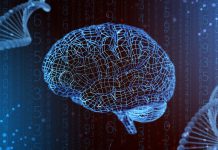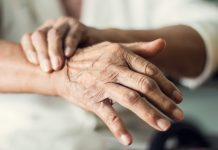Around 28 million people are living in the UK with chronic pain. What can we do to relieve pain without pills?
Painkillers may offer some relief in the acute situation, but as time passes, the body becomes tolerant to their effects. In addition, side effects may develop, and depression and anxiety are common as pain and disability get worse. More and more, both doctors and their patients are looking for drug-free methods of pain relief.
Below is a list of drug-free options for pain relief. Anyone with chronic pain can consider using these as an alternative or in addition to conventional analgesic medication.
Heat and cold treatment
We know that applying heat or cold to a painful area can relieve muscular pain. In a 2022 meta-analysis which analysed 59 studies, applying a hot pack was found to be the most effective method of pain relief out of 10 treatment options. The second most effective treatment modality was contrast therapy in which hot and cold were applied alternately to the painful site. Cold temperatures were no lower than 10°C and the hot therapy was 35–40°C.
A heated pad is thought to work because it increases blood flow and the oxygen supply to the damaged area, and also accelerates the removal of inflammatory mediators. Heat also quietens overactive peripheral nerves. When you are in pain, these are in an excitable state which can cause muscle cramps and stiffness.
Cold therapy has been used for acute injuries for centuries to reduce inflammation, swelling and pain. Scientists believe the cold causes blood vessels to constrict, diverting more blood towards the heart and lungs, ensuring it is well-oxygenated. When the cold stimulus is removed, nutrient-rich blood flows more readily to the damaged area. Lactic acid and other waste products are then removed. Repeated episodes of cold-water therapy are thought to have long-term positive effects on the blood circulation.
Hot therapy can be administered by applying a heated pad to the painful area, or by sitting in a hot bath or sauna. Cold therapy can be undertaken by applying an ice pack, or a cold pad to the area, or getting into a cold or ice bath. With both therapies, wrap a towel around the pad before putting it into direct contact with the skin to avoid burning. 5-10 minutes of treatment at a time is recommended, and no more than 20 minutes per session.
Useful links:
https://www.ncbi.nlm.nih.gov/pmc/articles/PMC6492480/
https://www.everydayhealth.com/wellness/cold-water-therapy/guide/
Physiotherapy
Physiotherapy helps relieve pain. The physiotherapist will assess each problem on an individual basis and see how it is affecting you. They can then suggest a specific exercise program tailored towards the injured area. Physios use a variety of techniques to improve mobility and flexibility, muscle strength and balance, and as the health of the muscle or joint improves, pain becomes less severe.
A physio may use massage techniques which can help drain excess fluid and help with relaxation. They may recommend acupuncture, transcutaneous nerve stimulation (TENS) or ultrasound – as explained below.
22.5% of people lose their job through chronic pain. Physio is a vital tool for rehabilitation and getting people back to work.
Useful links:
https://www.nhs.uk/conditions/physiotherapy/how-it-works/
Massage
Massage helps relieve pain by interrupting ‘the pain cycle.’ This is the cyclical pathway in which pain causes increased muscle tension – which results in reduced blood flow to the area and stimulates inflammation – which further worsens the pain so the person is reluctant to move. Immobility exacerbates the problem causing more pain and stiffness.
However, massage breaks the cycle because the direct action of pressure on the muscles reduces muscular tension and allows blood to flow more freely. This then lowers inflammation and the person feels able to move the joint or muscle again.
One 2008 randomised controlled trial, concluded that deep massage reduced muscular pain by 25%-50%. Another 2010 study, showed that 30 minutes of massage on one or more occasions, significantly reduced pain in a group of medical and surgical inpatients.
Massage is recommended by the National Institute of Clinical Excellence (NICE) for those with low back pain, in conjunction with psychological therapies such as CBT.
Useful links
https://colepaintherapygroup.com/how-does-massage-interrupt-the-pain-cycle/
Yoga
A 2022 review and meta-analysis of 27 randomised controlled trials compared yoga with passive movement to treat low back pain. The authors concluded that yoga significantly reduced pain intensity, pain-related disability, and mental ill-health as well as improving physical function. These benefits continued long-term, apart from the mental health benefits.
Yoga is a mind-body exercise that lowers anxiety, slows the heart rate, and improves muscle oxygen uptake. The breathing techniques in yoga stimulate the parasympathetic nervous system, the body’s involuntary pathway linked to feelings of pleasure and relaxation. Yoga is a good treatment for stress management. Anything that lowers stress is likely to reduce pain.
Acupuncture
A 2019 review of the medical literature, concluded there was enough evidence to support the fact that acupuncture gives modest relief from chronic lower back pain, tension headache, migraine and musculoskeletal pain.
In many of the studies looking at acupuncture for acute low back pain and osteoarthritic knee pain, there was little difference between the effects of sham or real acupuncture. This suggests that much of the relief from acupuncture is a placebo response. However, a placebo response is still a response, and acupuncture can be a helpful option, especially for patients for whom pain medication is contraindicated.
Transcutaneous nerve stimulation (TENS)
Transcutaneous electrical nerve stimulation (TENS) is a pain treatment modality that has been used with success for post-operative pain, low back pain, diabetic peripheral neuropathy, osteoarthritis, fibromyalgia and neuropathic pain.
A TENS machine is a battery-operated unit connected to the skin via electrodes. The way it works is complex but it stimulates nerves involved in both the central and the peripheral nerve response. Once connected, it can be left in situ for up to 5 hours per day. It is not suitable for anyone pregnant, who has epilepsy or who has a pacemaker.
Cognitive Behavioural Therapy (CBT)
Cognitive behavioural therapy (CBT) is a psychological treatment which aims to improve a patient’s knowledge and understanding of their condition and assists them in developing coping strategies to reduce their symptoms. It has been used successfully to treat pain.
In a 2022 systematic review and meta-analysis of CBT and other treatment methods for chronic low back pain, CBT was found to produce the greatest effect in reducing pain, fear avoidance and improving self-efficiency.
CBT helps change a person’s perception of their illness/symptoms. The idea is that they don’t view it from such a negative perspective. Many people fear using a joint or muscle which is painful but in fact, using it is often exactly what they should be doing. The body dislikes long periods of inactivity and was made to be used. However, some people may need to hear this from a therapist to believe it!
Also, pain causes stress, and stress causes pain. CBT involves relaxation techniques which break the cycle. CBT sessions may be offered as several 45-minute sessions, on a one-to-one basis, or it may mean attending longer group sessions, over a period of 8-24 weeks.
You can self-refer for CBT on the NHS – to find out more click here.
Biofeedback
Biofeedback is a psychological technique in which you undergo relaxation therapy, breathing exercises and/or mindfulness and meditation, while you are connected to a computer. This means details such as your body temperature, heart rate, breathing rate and blood pressure can be fed back to you. In this way, you become more aware of the autonomic nervous system, your body’s involuntary pathway, so you can learn what to do to slow your breathing and your heart rate and lower your blood pressure.
Biofeedback has been successfully used to treat chronic low back pain, fibromyalgia and headaches.
Exercise
Research shows that physical exercise is an excellent way to help reduce pain. Your body was made to be used and long periods of inactivity cause stiffness, muscle weakness and contribute to obesity, putting further stress on your joints. Anyone with chronic pain may now be prescribed exercise by their GP.
Exercise improves cardiovascular function, muscular strength, proprioception and balance. It can be carried out alone or in groups or teams. Exercising with others is good as it improves connectivity and is a great way to combat loneliness. Good examples of suitable exercise for patients with pain include Pilates, Yoga, Tai Chi, swimming and hydrotherapy.
Ultrasound
Therapeutic ultrasound uses sound waves which interact with body tissues. It can improve blood flow, encourage healing, stimulate collagen and improve elasticity of the area.
In a 2021 systematic review and meta-analysis of ultrasound treatment for chronic low back pain, the authors reviewed 6 randomised controlled trials involving 699 patients. 5 out of these 6 studies concluded that ultrasound significantly reduced pain on a visual analogue scale.
Although generally safe, therapeutic ultrasound is not safe in pregnancy, in anyone with a pacemaker or other types of implanted devices, or who has a localised cancer in the treatment area.
Natural products
Natural products have been used for many years to help relieve pain. There is a small amount of research to support the fact that some of these products have a real, therapeutic effect. It’s important to stay cautious, as just because something is natural, doesn’t mean it’s always safe. Even natural products can have drug interactions and can cause allergies. Always read the product information carefully, and check with your GP if you have a chronic illness and take regular medication before starting to take any natural remedies.
Capsaicin
Capsaicin is the natural ingredient in chilli peppers that gives it a hot taste. When applied to the skin as a cream, it is absorbed through the skin and blocks some specific pain receptors. It also blocks the release of substance P, a neuropeptide that plays a vital role in pain perception. Because it is applied to the skin and is not taken by mouth, there is a lower risk of side effects. Capsaicin cream is safe and effective. It is not suitable for women who are pregnant, trying to conceive or breastfeeding.
In a small, 2010 randomised, double-blind trial of capsaicin cream or a placebo used in patients suffering from soft tissue pain, the capsaicin group had a significantly greater reduction in pain than those using the placebo.
St John’s Wort (SJW)
SJW contains hyperforin and hypericin which inhibit the reuptake of some of the brain neurotransmitters such as dopamine and serotonin. Hence SJW can be effective in elevating mood in depression, calming anxiety and lowering pain. SJW induces liver enzymes and interacts with other medication so always discuss this with your GP before you start to take it.
In a recent 2023 randomised controlled study, the use of topical St John’s Wort oil in knee osteoarthritis was compared to a placebo. The St John’s Wort oil group were found to have significantly better reduction in pain, stiffness and improved physical function than the placebo group.
Turmeric
Turmeric contains curcumin which has anti-inflammatory effects by reducing levels of inflammatory cytokines (cell signalling molecules). It has to be used in high doses to lower pain as it is poorly absorbed from the gut.
In a 2020 BMJ systematic review and meta-analysis, the authors reviewed 10 randomised controlled trials of the use of turmeric for knee osteoarthritis versus a placebo. All 10 studies showed a significant reduction in pain from baseline in those who took turmeric. Turmeric was found to be safe and effective.
Omega-3 fatty acids
Omega-3 fatty acids such as eicosapentaenoic acid (EPA) have been shown to have an anti-inflammatory effect. Adding EPA to your daily diet has been shown to reduce the frequency and severity of migraine. It may also help with period pain, pain in Rheumatoid arthritis and inflammatory bowel disease.
A 2007 review and meta-analysis of 17 randomised controlled studies studied the use of omega-3 fatty acids in patients with joint pain from Rheumatoid Arthritis, inflammatory bowel disease and period pain. Supplementation with omega-3 fatty acids for 3-4 months significantly reduced joint pain intensity, the duration of early morning stiffness, the number of painful, tender joints and the amount of NSAIDs that needed to be taken. The authors concluded that omega-3 supplements could have benefits for patients with these medical conditions.
Popping pills is not always the answer
If you have chronic pain, there are a large number of alternative treatments and natural therapies that could help. The important thing is to keep moving and avoid as far as possible being sedentary.
Many of these alternative treatments are available on the NHS. Your GP can now prescribe exercise, for example, as part of the GP Exercise Referral Scheme. Your GP may also be able to refer you for hydrotherapy. You can also self-refer to CBT.
- If you are in pain, what other treatment options might help you?
- What could you do today to start to feel better?
For more information
- NHS – 10 ways to reduce pain
- Harvard Health Publishing – 8 non-invasive pain relief techniques that really work











